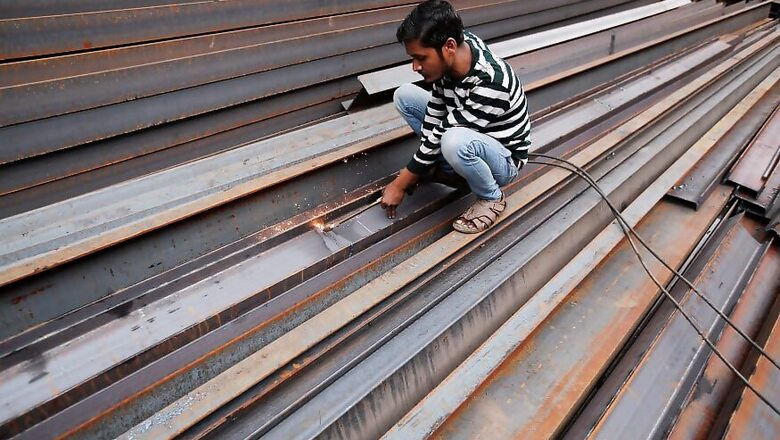
views
The country has avoided steel imports worth over Rs 20,000 crore following DMISP policy since its launch in 2017, Union Steel Minister Dharmendra Pradhan said on Monday.
In 2017, the government launched the National Steel Policy (NSP) with an aim to scale up India's steel making capacity to 300 million tonnes by 2030 with an additional investment of Rs 10 lakh crore.
The government also rolled out the domestically manufactured iron and steel products policy (DMISP) policy to boost the use of domestic steel products in government organisations.
"From a small capacity of 22 million tonne (MT) in FY 1991-92, India has now become the second largest steel producer in the world with a production of 111 MT in 2019, surpassing Japan and the US.
"Through the DMISP Policy, we are giving a boost to domestic sourcing of iron and steel products by central government organisations by mandating preference. Through this DMISP Policy, steel imports worth over Rs 20,000 crore have so far been avoided," Pradhan said.
The minister also said the government's thrust on infrastructure development will have a positive bearing on driving steel consumption in the country.
The national infrastructure plan of Rs 102 lakh crore will generate steel demand across sectors like civil aviation, roads, railways, energy etc, and the government will continue to promote maximum usage of home-made steel in projects that would come in these industries, he added.
The ministry has also envisaged setting up of steel clusters to enhance the downstream ecosystem in the steel sector. This will significantly enhance employment opportunities in the sector. This move would also encourage the MSMEs in the steel sector to produce more value-added products.
Pradhan was speaking during the launch of India's first continuous galvanized rebar (CGR) manufacturing facility in Mandi Gobindgarh, Punjab, set up by Madhav Alloys with support from International Zinc Association.
In the virtual event, he also emphasised on the importance of the usage of zinc in the steel sector.
Under the galvanisation process, a protective zinc coating applied to iron or steel, to prevent rusting.
India, Pradhan said, is the fourth largest producer of zinc in the world and contributes around 6 per cent to the global production. Approximately 75 per cent of the zinc used in the country finds application in galvanising of steel products like sheets, pipes, structural, wires etc.
"With our (government's) focus on large-scale expansion in infrastructure sectors and driving steel intensity, the demand for galvanised steel is set to rise," he added.
Pradhan further said the facility launched on Monday is the country's first CGR facility in India and will support the much awaited need of supplying galvanised rebar to the construction industry.


















Comments
0 comment